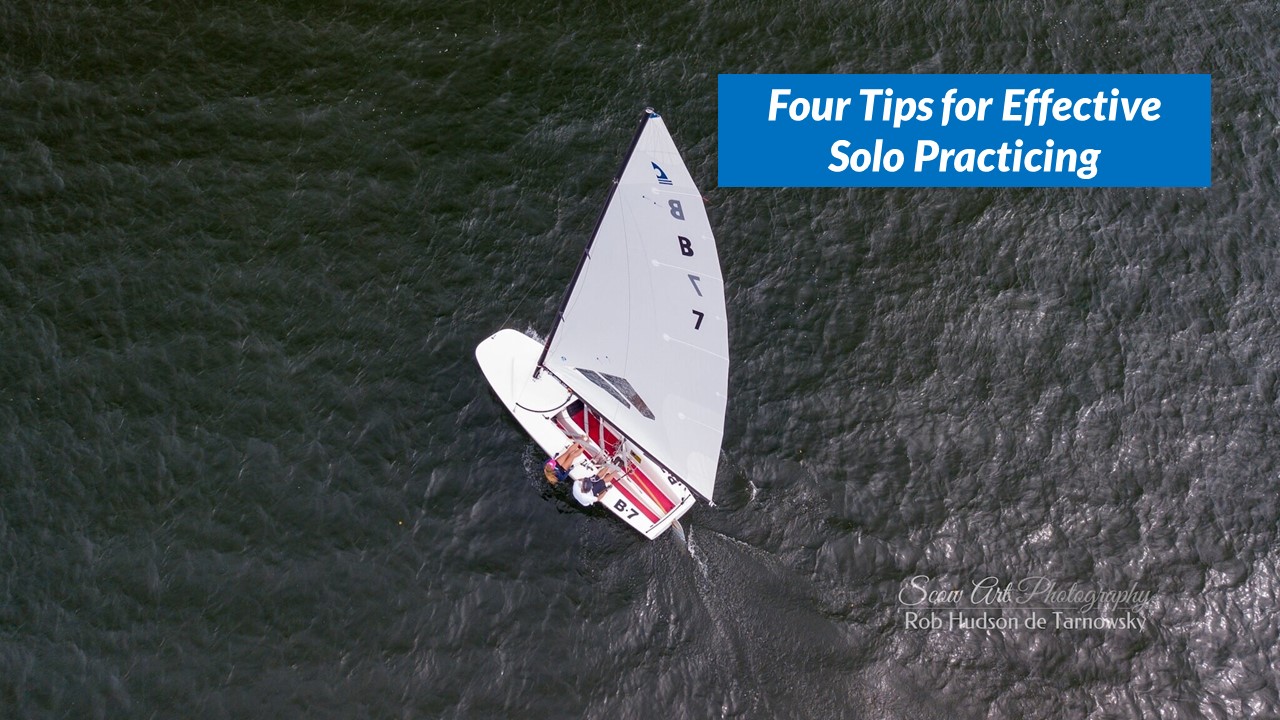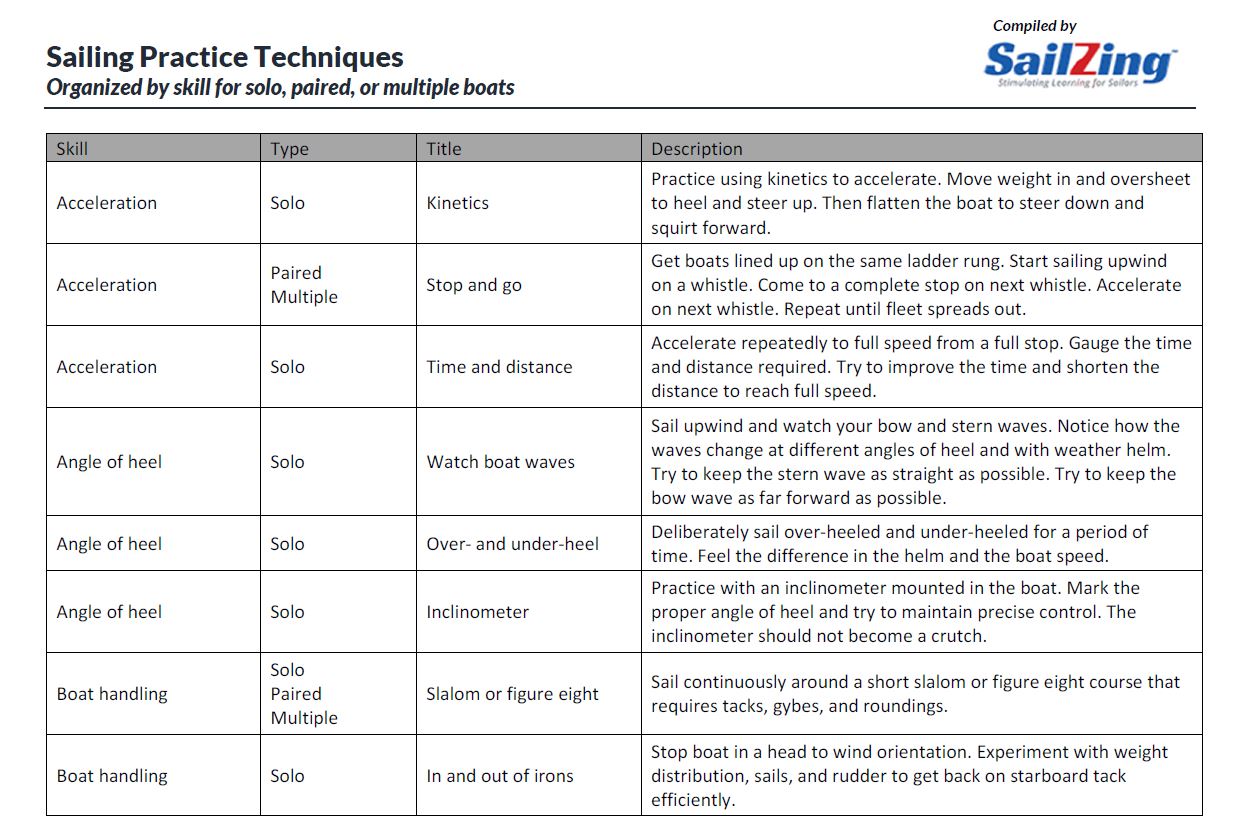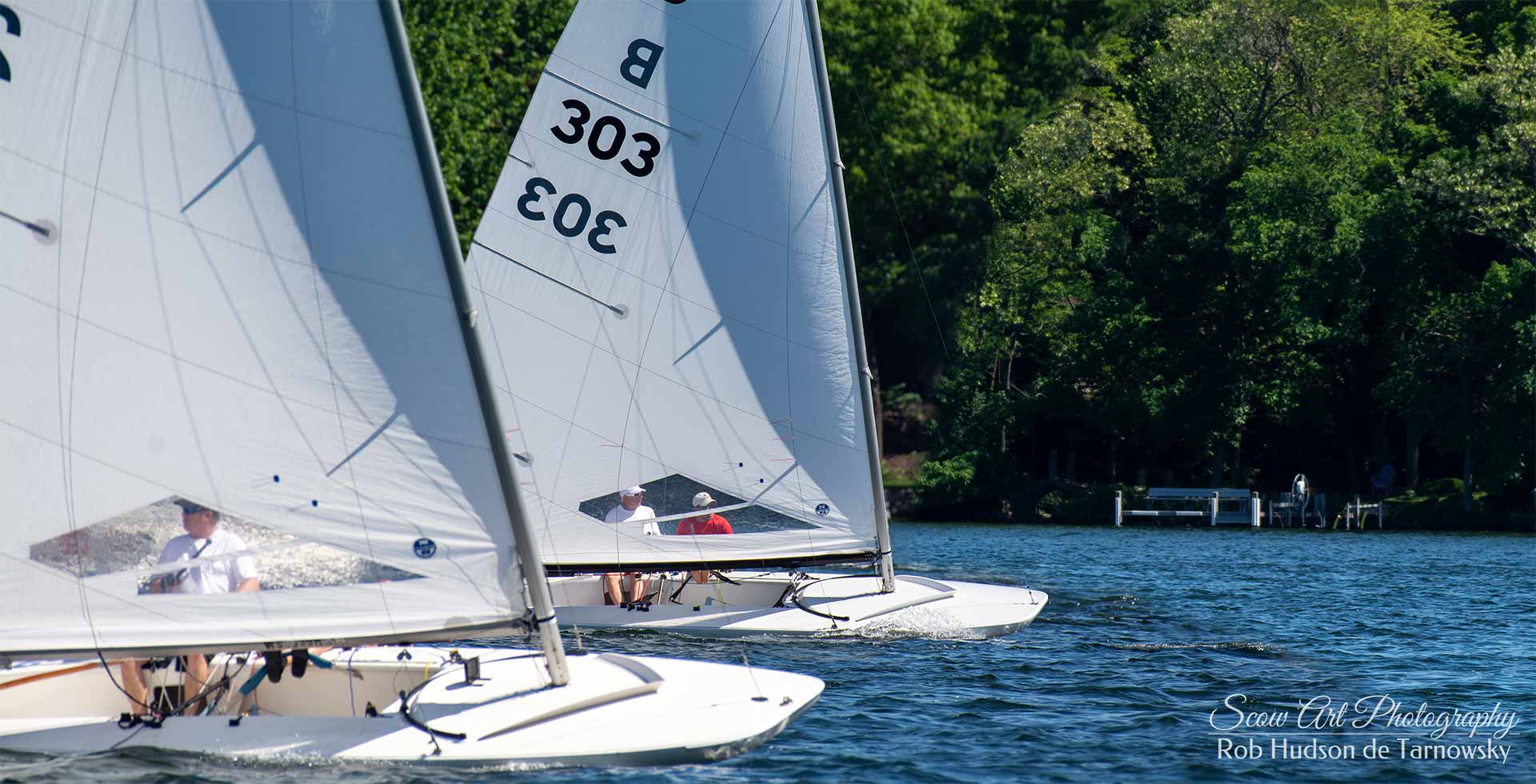The beauty of solo practicing is that you can work on a wide range of techniques and abilities without having to rely on anyone else except your crew and perhaps some emergency rescue service being present.
Eric Twiname, in Sail, Race and Win
Regattas canceled? Training partners worried about social distancing? Don’t worry – you can still improve your sailing with solo practicing.
For this post, we collected four simple, but powerful tips on how to make the most of a session. These tips, along with our post Sailing Practice Techniques – Here are 60 to Try, will make your solo sailing more effective.
Our primary sources were Solo Practicing (Sailing World), by Steve Hunt and Sail, Race and Win by Eric Twiname.
Skills Suited to Solo Practicing
You might think training alone is counterproductive, since without feedback you could get a false sense of accomplishment. However, as long as you have a mental picture of success, there are plenty of skills you can perfect alone. Hunt lists three areas: boat handling, starting, and boat speed awareness. Twiname goes further, with the following list of skills:
- Tacking
- Gybing
- Heavy weather techniques
- Angle of heel
- Wind shift spotting
- Starting
- Mark rounding
- Wave technique
- Spinnaker hoists, drops, and gybes
- Physical fitness
- Skipper/crew coordination
- Self-confidence
- Intuitive side of boat speed
Our post Sailing Practice Techniques – Here are 60 to Try has practice techniques for each of these skills.
Tips for an Effective Practice Session
#1. Focus
Focus your practice on a few manageable areas to improve. Break down a skill into small parts and work to perfect one or two of the parts. For example, in tacking, work on your footwork, or changing hands, or getting to the other side quickly. Progress on the small things leads to a sense of accomplishment. Eventually, the small things add up to major improvement.
#2. Mix things up
Keep yourself interested by adding variety in each session. Do some things you enjoy, as well as some things that are difficult and therefore less fun.
#3. Think and experiment
With only a few focus areas for your session, you have time to think through the skills and experiment with different techniques. Repeat the skill over and over, until you get it right. Once you develop a technique this way, it becomes your own.
#4. Incorporate short bursts of intensity
You’ve heard the saying, “you play like you practice.” Sailing is intense, so don’t lollygag through an entire practice session. Work on intensity in short 10-20 minute bursts. Try to make things more intense than in a race. This will develop your ability to perform under pressure.
Sail, Race and Win: Take a Serious Approach to Improvement – review of Twiname’s book
Realistic Appraisal: Mental Skills for Sailing, Part 4
Tag Search Results – Practice Tips




